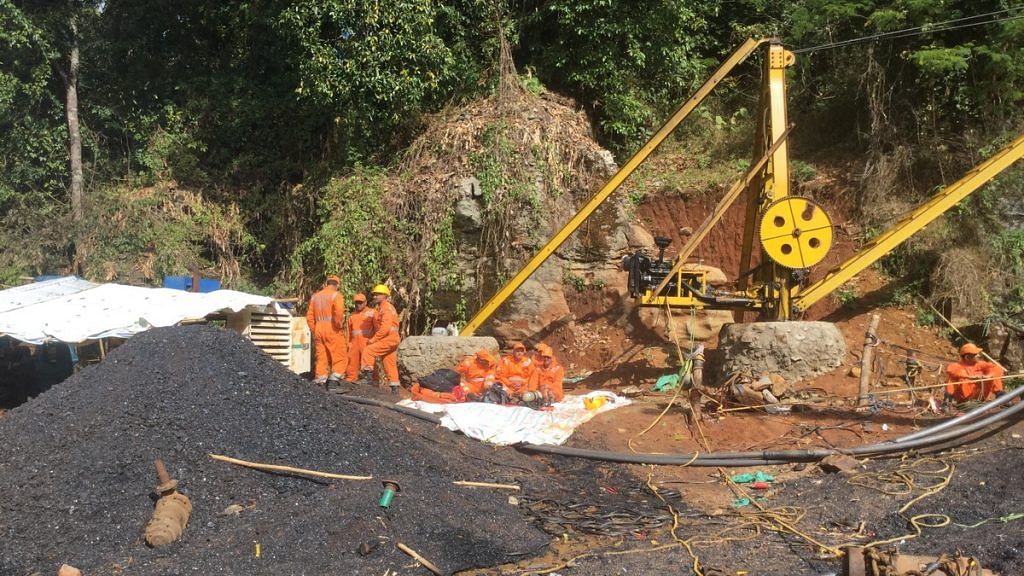The air force and the navy have both been pressed into action to try and rescue the 15 trapped labourers, but the delay has drawn flak from society.
New Delhi: Sixteen days after at least 15 labourers got trapped inside an illegal rat-hole mine in Meghalaya’s East Jaintia Hills district, the military was finally deployed Friday to help in the rescue operations.
But the fact that it took the local, state and central administration this long to deploy the air force and the navy invited severe criticism from a large section of society.
A heavy transport aircraft of the Indian Air Force, carrying seven high-power pumps, landed at Guwahati airport, from where the high-pressure pumps were to be transported by road to Lumthari village.
The plane took off with the heavy tools from Bhubaneswar in Odisha early Friday morning, after low-capacity pumps used by the National Disaster Response Force (NDRF) were ineffective in extracting water from the collapsed mine.
Officials said water from an adjacent abandoned mine was flooding the rat-hole mine, making it unsafe for their divers to operate.
The Indian Navy then sent a 15-member team of divers to help in the rescue efforts. The team, which was stationed at Visakhapatnam, is carrying specialised diving equipment, including a re-compression chamber and remotely-operated vehicles capable of searching underwater. The team is expected to reach the spot Saturday morning.
One team of divers is already on site, and carried out an initial assessment Friday to determine an effective response.
ThePrint had travelled to the spot last week and reported on the severity of the issue.
Also read: Missing officials & missing pumps delay rescue of Meghalaya miners
The real tragedy
Families of the trapped labourers have alleged that no one is bothered because they are poor.
The real tragedy of the mine accident is how avoidable it was. Just four years ago, the National Green Tribunal (NGT), India’s environment court, had banned rat-hole mining, a process said to account for the bulk of mining operations in Meghalaya, while flagging its inherent risks.
According to an explainer in The Indian Express, rat-hole mining of the sort being undertaken at the East Jaintia Hills site involves digging a vertical tunnel up to 400 feet deep in search of coal seams, which are beds of the mineral that are thick enough to be profitably mined.
Once a coal seam is spotted, extremely narrow tunnels (hence, rat holes) are dug horizontally, which miners then enter to extract the black gold.
At the accident site, waters from the Lytien river have flooded the main coal pit, leaving the miners with no way out.
Also read: No one is bothered because we are poor, say families of trapped Meghalaya miners
